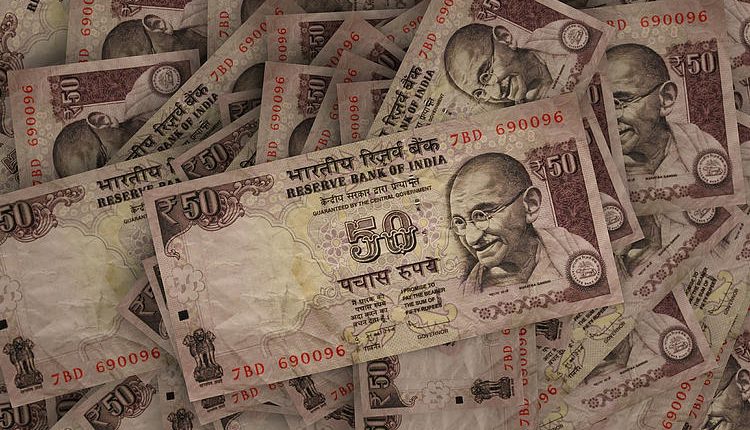- The Indian Rupee extends the decline in Tuesday’s Asian session.
- Negative domestic markets and relentless foreign capital outflows weigh on the INR.
- Investors await the outcome of the US presidential election for fresh catalysts.
The Indian Rupee (INR) extends its downside on Tuesday after closing at a new all-time low in the previous session. The downtick movement of the local currency is pressured by continuous foreign outflows from the equity markets due to jitters amid institutional players ahead of the outcome of the US presidential election and the US Federal Reserve (Fed) interest rate decision on Thursday.
Nonetheless, the likely foreign exchange intervention from the Reserve Bank of India (RBI) by selling US Dollar (USD) could help limit the INR’s losses. Looking ahead, investors brace for the winner of the US presidential election, which may not be known for days after voting ends. On Thursday, the Fed monetary policy meeting will be closely watched.
Daily Digest Market Movers: Indian Rupee remains vulnerable amid US election-related uncertainty
- The HSBC final India Manufacturing Purchasing Managers Index (PMI) improved to 57.5 in October from an eight-month low of 56.5 in September and was above a preliminary estimate of 57.4.
- “India’s headline manufacturing PMI picked up substantially in October as the economy’s operating conditions continue to broadly improve,” noted Pranjul Bhandari, chief India economist at HSBC.
- “The polls suggesting that Harris may have her nose in front in a couple of swing states is causing a bit of profit-taking in the Trump trade,” noted Kenneth Broux, head of corporate research FX and rates at Societe Generale.
- According to the IMF, India is now estimated to overtake Japan as the world’s fourth-biggest economy by FY2025. The IMF forecasts that India’s GDP will rise to $4,340 billion next fiscal year.
- Financial markets are now pricing in nearly a 98% possibility of a quarter point reduction and a near 80% chance of a similar-sized move in December, according to CME’s FedWatch tool.
Technical Analysis: USD/INR keeps the positive bias
The Indian Rupee softens on the day. According to the daily chart, the constructive outlook of the USD/INR pair remains unchanged as the pair is well-supported above the key 100-day Exponential Moving Average (EMA). The 14-day Relative Strength Index (RSI) holds above the midline near 65.20, indicating that further upside looks favorable.
The upper boundary of the ascending trend channel of 84.25 acts as an immediate resistance level for USD/INR. A clear bullish candlestick above this level could pave the way to 84.50, en route to the 85.00 psychological level.
On the flip side, a breach of the lower limit of the trend channel near 84.05 could attract enough bearish pressure to 83.78, the 100-day EMA.
Indian Rupee FAQs
The Indian Rupee (INR) is one of the most sensitive currencies to external factors. The price of Crude Oil (the country is highly dependent on imported Oil), the value of the US Dollar – most trade is conducted in USD – and the level of foreign investment, are all influential. Direct intervention by the Reserve Bank of India (RBI) in FX markets to keep the exchange rate stable, as well as the level of interest rates set by the RBI, are further major influencing factors on the Rupee.
The Reserve Bank of India (RBI) actively intervenes in forex markets to maintain a stable exchange rate, to help facilitate trade. In addition, the RBI tries to maintain the inflation rate at its 4% target by adjusting interest rates. Higher interest rates usually strengthen the Rupee. This is due to the role of the ‘carry trade’ in which investors borrow in countries with lower interest rates so as to place their money in countries’ offering relatively higher interest rates and profit from the difference.
Macroeconomic factors that influence the value of the Rupee include inflation, interest rates, the economic growth rate (GDP), the balance of trade, and inflows from foreign investment. A higher growth rate can lead to more overseas investment, pushing up demand for the Rupee. A less negative balance of trade will eventually lead to a stronger Rupee. Higher interest rates, especially real rates (interest rates less inflation) are also positive for the Rupee. A risk-on environment can lead to greater inflows of Foreign Direct and Indirect Investment (FDI and FII), which also benefit the Rupee.
Higher inflation, particularly, if it is comparatively higher than India’s peers, is generally negative for the currency as it reflects devaluation through oversupply. Inflation also increases the cost of exports, leading to more Rupees being sold to purchase foreign imports, which is Rupee-negative. At the same time, higher inflation usually leads to the Reserve Bank of India (RBI) raising interest rates and this can be positive for the Rupee, due to increased demand from international investors. The opposite effect is true of lower inflation.
Read the full article here

